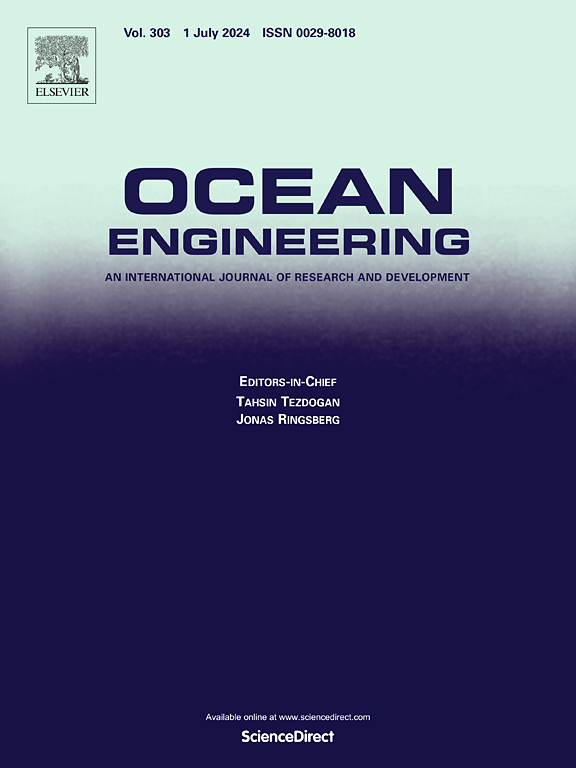A probabilistic framework for assessing helicopter landing conditions within the ship air-wake
IF 4.6
2区 工程技术
Q1 ENGINEERING, CIVIL
引用次数: 0
Abstract
Particle Image Velocimetry (PIV) measurements were performed in a wind-wave facility to characterise the ship air-wake on the landing deck (LD) of a stationary NATO-GD model. To our knowledge, this is the first laboratory ship air-wake experiment in a naturally-developed boundary layer over a water surface. This study builds on our previous wind tunnel tests over a solid floor (Setiawan et al. 2022, Ocean Engineering, vol. 260, 111931). The results indicate that the air-wake statistical characteristics are comparable to the wind tunnel data, with the mean flow and turbulence kinetic energy only differing by 5% and 2%, respectively, from the flat-plate baseline flow. We further developed a new probabilistic method to estimate the “landing risk” percentage based on the likelihood of extreme turbulence events. Although the exercise was performed using the local vertical wind fluctuations employing a threshold specified for civil aviation, the approach can be adapted for other metrics or can employ a more suitable limit for the Navy context. In essence, we mapped the fractional time (out of the total PIV snapshots) when the exceeded the selected threshold. Having shown Reynolds number independence, we scaled up the velocity data in order to emulate a set of higher reference velocities. It is shown there is a non-linear increase in the “landing risk” percentage with increasing reference velocity (wind speed), and the various inflow conditions affect landing risk.
求助全文
约1分钟内获得全文
求助全文
来源期刊

Ocean Engineering
工程技术-工程:大洋
CiteScore
7.30
自引率
34.00%
发文量
2379
审稿时长
8.1 months
期刊介绍:
Ocean Engineering provides a medium for the publication of original research and development work in the field of ocean engineering. Ocean Engineering seeks papers in the following topics.
 求助内容:
求助内容: 应助结果提醒方式:
应助结果提醒方式:


